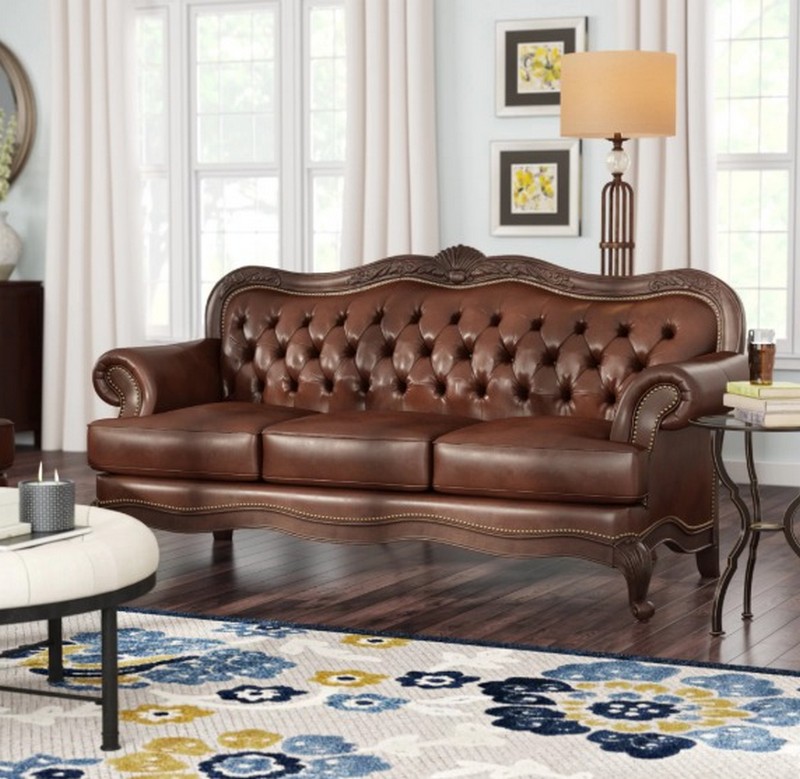Can you judge the quality of a wood frame sofa and another sofa you have just seen in the hardware store? Well, you really need to find out more than what looks like since we are talking about the quality. In fact, two identical-looking sofas could show you too much in price. Anything inside the soda will determine how the quality rates of your sofa. There are many factors and items you should take a look in the first place
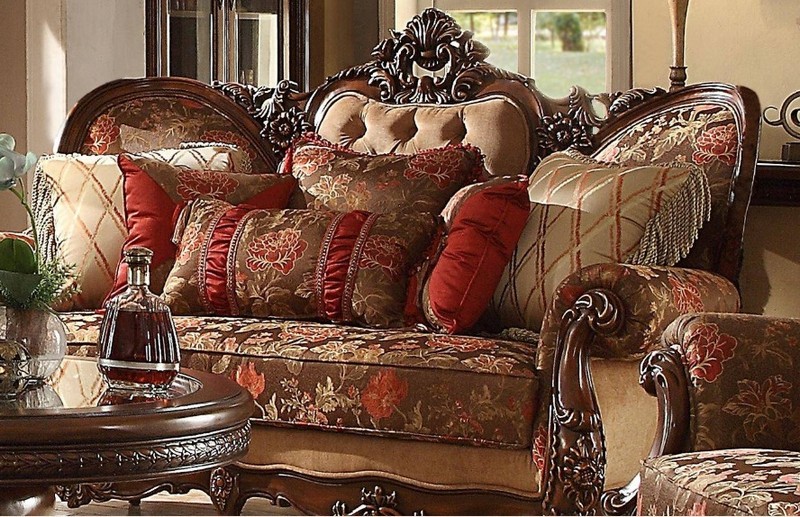
The frame materials
The frame of a sofa will determine how long a sofa could retain and last. A high-quality sofa will always use a strong yet sturdy frame. We can say that a wood frame sofa is the best. But you should know that kiln-dried hardwood could provide the best frame for your sofa. The drying process has removed all moisture and water from the wood so it could stay stable and retain its shape for years.
The joints of the wood frame would get special attention. It will involve gluing, dowelling, and screwing to make sure its strengths. The corners get their extra strength and support through the additional reinforcing block.
Particleboard and plywood frames are generally inferior especially if those are stapled together. Additional layers of plywood would help to give extra support to the frame. Constructions play a huge role just like materials.
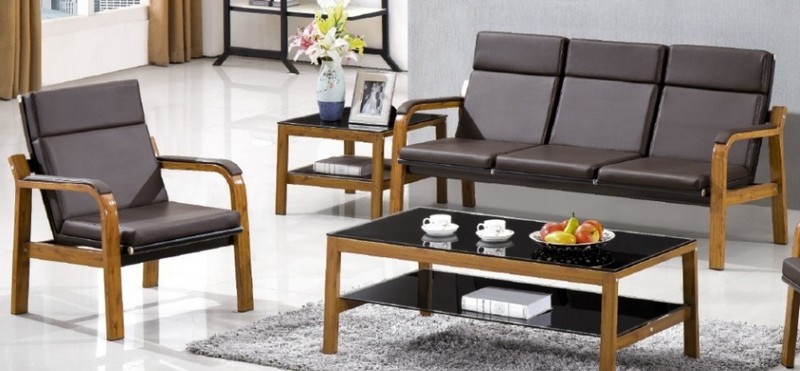
Seating supports
The quality of a sofa is also determined through its seating supports. It works directly with the frame and filling. In fact, people will try the seating support before purchasing a sofa in the first place.
It can be touted that the eight-way hand tied springs system is one of the best ones. Each spring is connected to one another to make a strong twine. In the end, this thing ties each securely.
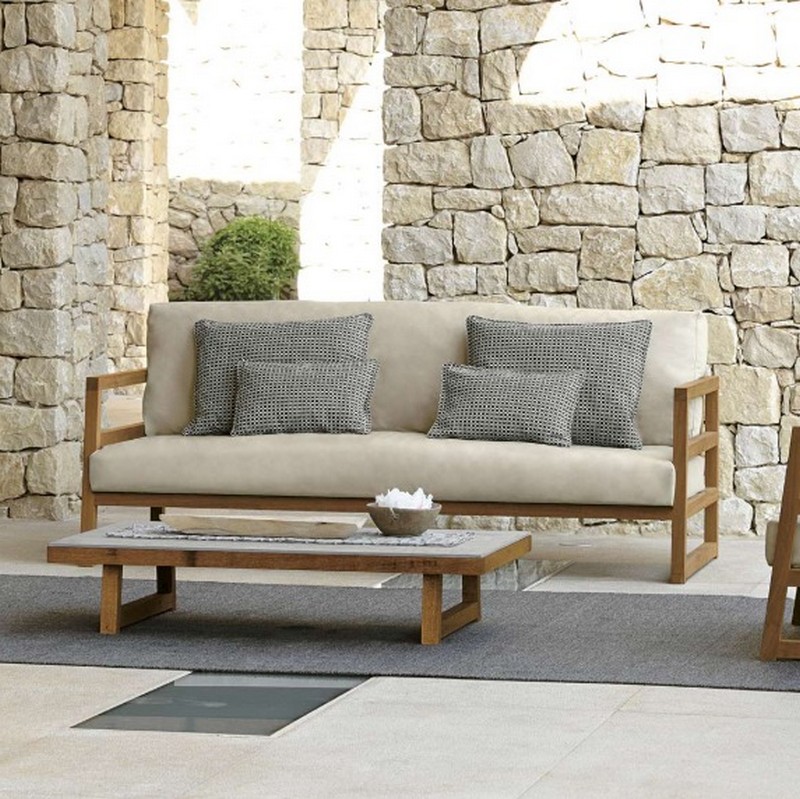
Sinuous spring construction is another great method. The system runs from the seat to the back. In the end, it makes a strong seat and is preferred for a smaller sofa frame for a sleeker style.
Web suspension is another option you can try. The webbing is installed across the back and seat and then attached to the frame. The web can be made of man-made fibers or natural fibers.
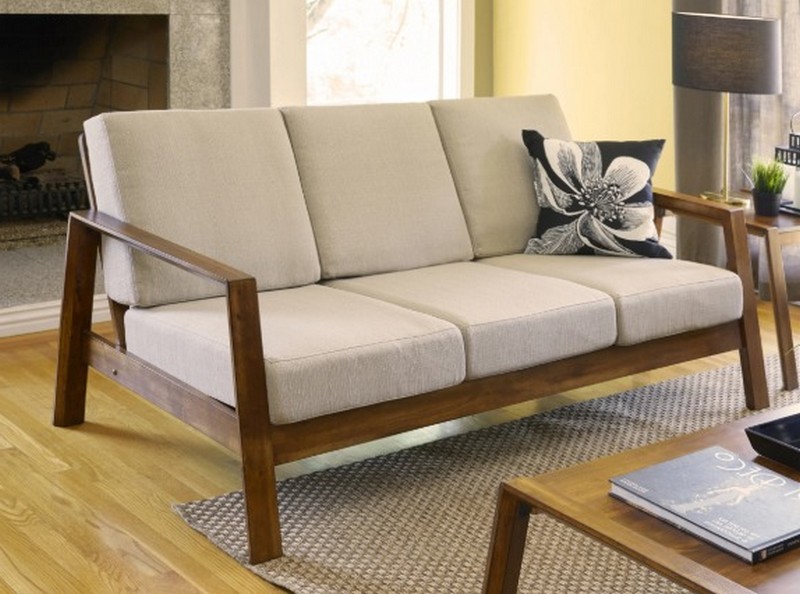
Cushion filling
The other thing you should consider is the cushion filling. The most common filling for cushions is high-density polyurethane. A higher density will make a firmer cushion. For a cheaper option, you can opt for dacron-wrapped foam but the durability is still in question,
Down cushions will make a soft seat. It is touted as a premium choice after all. However, you need to take care of it carefully since it may need daily attention as well.
Bottom line
Essentially, quality comes from more than something cheap. However, you will understand if a good-quality sofa is such an investment in the end. They could stay comfortable and the look will retain even after a long time. So, if you intend to purchase a wood frame sofa, just make sure that you can afford it in the first place.

Your Guide to Assessing the Quality of Sofas or Lounges
It’s time to start looking for a sofa, and you have a particular style in mind. Take care to be thorough. While a sofa or a lounger might appear impressive on the outside, it’s the internal components that truly matter in terms of quality. Follow these shopping tips to discover a durable, high-quality sofa that you’ll also adore.
Inquire About the Frame
If you’re seeking a high-quality sofa, ensure that it comes with a robust frame. For superior craftsmanship, seek out a frame crafted from kiln-dried hardwood, typically ash, maple, or oak. For a more affordable yet sturdy option, consider a sofa with a frame constructed from engineered hardwood consisting of at least seven layers of pressed wood. Stay away from items featuring frames made from softwood, medium-density fiberboard (MDF), standard plywood, or particleboard.
Inquire About the Joints
The construction of the frame is just as crucial as the type of wood used. Lower-quality sofa frames often have components held together with glue or staples. For top-notch craftsmanship, seek out frames that feature tongue-in-groove, mortise-and-tenon, or dowel joints with reinforced corner blocks. The sofa legs should either be attached to the frame or affixed to the frame with long screws or bolts.
To assess the quality of a sofa frame, grasp the sofa from the back and sides and attempt to move it. A well-constructed frame should remain steady without wobbling or twisting.
Take a Seat
Always test a sofa by sitting on it before making a purchase. Ensure it provides good back support and doesn’t sag. Inquire about the seating system. Typically, sofas feature springs located between the frame and cushions to provide support. The springs should be positioned fairly close together for longevity and comfort.
Over time, products featuring lower-quality springs can begin to sag or bend. To ensure top quality, seek out sofas or daybeds with eight-way, hand-tied, or coiled spring construction.
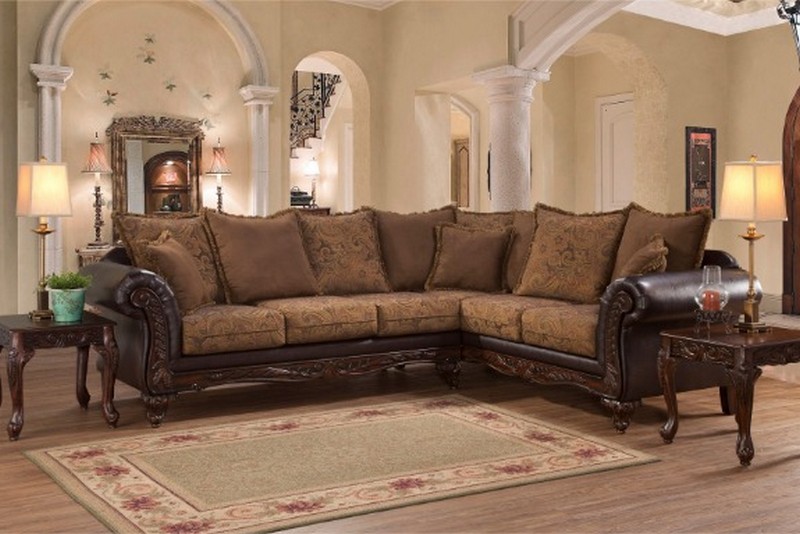
Hand-Tied Eight-Way Spring Construction
Hand-tied eight-way springs have long been regarded as one of the best options for chair construction in terms of quality. Skilled craftsmen tie the springs front to back, side to side, and diagonally to create these coils, ensuring comfort, flexibility, and support.
Sinuous Spring Construction
A sinuous spring system consists of numerous S-shaped wires running from the front to the back of the chair. The wires are interconnected by ropes and attached to the frame with clips. If one of these wires breaks, it can be replaced without needing to replace the entire chair. Sofas with this system are often more affordable than those using the hand-tied method, but this doesn’t imply that they are of inferior quality.
Check the Cushions
The quality of a sofa also hinges on its cushions. To prevent sagging, opt for one with seat cushions featuring a high-density foam core that is at least four inches thick, or a core made of individually wrapped springs. Both cores should be wrapped in layers of soft foam, polyester fiber, and/or down for added comfort.
Back cushions do not usually come with high-density foam or springs. They are typically filled with down, polyester fiber, or a blend of the two. For superior construction, the back cushions are segmented into channels, which are filled separately and then wrapped in upholstery.
Inspect the Fabric
Not all upholstery fabrics are created equal. To enhance durability, upholstery fabrics should be tightly woven. Loosely woven fabrics tend to wear out or snag more quickly. Review the various fabrics and their advantages to select the most suitable upholstery for your needs:
Microfiber: Suede-like appearance, stain-resistant, cost-effective
Linen: Eco-friendly, breathable, hypoallergenic, becomes softer with use
Cotton Canvas: Versatile, breathable, durable, lint-resistant
Wool: Retains heat in cold climates, durable, resistant to mildew, flame-retardant
Leather: Develops patina over time, durable, easy to clean, odor-resistant
Vinyl: Highly durable, easy to clean, cost-effective
Velvet: Soft, lustrous, durable (mohair velvet), resistant to fading (synthetic velvet)
When shopping for a new sofa, utilize these tactics to ensure that you are purchasing a high-quality product. Test the comfort by sitting on the sofa, and be sure to inquire about the frame, seams, seating system, cushioning, and fabric. If you are wondering which brands produce top-quality sofas, explore the array of stylish and well-crafted options available.
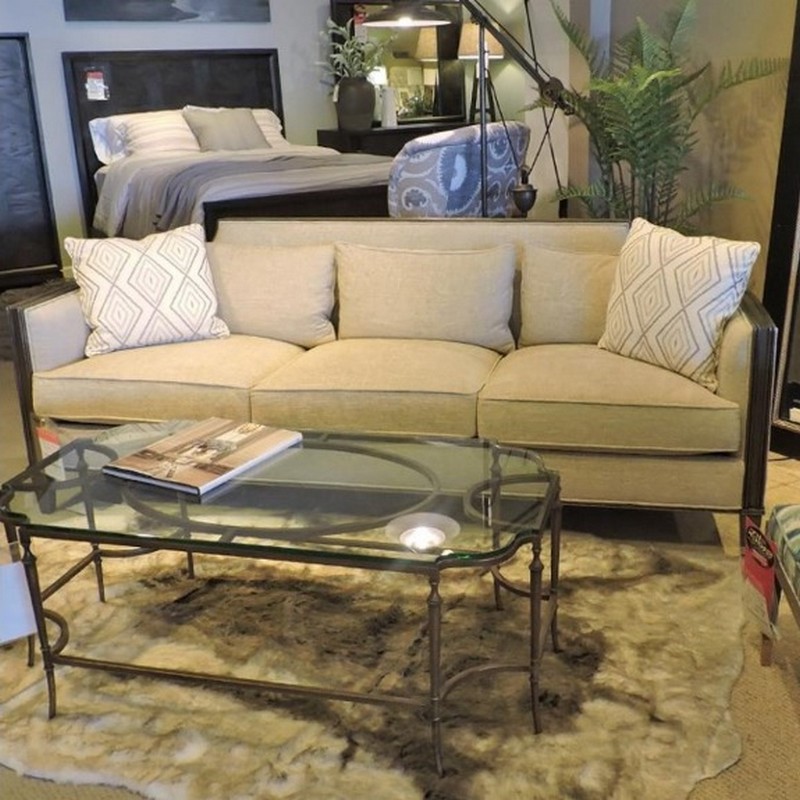
Is linen a suitable choice for upholstery on a sofa?
Many individuals appreciate linen fabric for its natural beauty and temperature-regulating properties when used in clothing and bedding. But is linen a good option for upholstery in the home? Definitely!
There are numerous reasons why linen fabric is perfect for furniture such as chairs and sofas that are subjected to daily use. If you are thinking about creating your own slipcovers or purchasing a sofa with linen upholstery, then utilize these suggestions to select the best upholstery fabric and maintain an impressive appearance in your home.
Why select linen fabric for your sofa?
Various fabrics can be used for sofa upholstery, ranging from natural materials like linen and cotton to luxurious velvet and edgy leather. Here’s why linen should be at the top of your list when considering potential sofa fabrics:
Linen is manufactured from flax plant fibers. Because flax requires fewer resources for production and is biodegradable, it is a more sustainable option compared to other materials like cotton or polyester.
High-quality flax fibers are sturdy and durable, making them an excellent choice for high-use furniture pieces such as couches or chairs. When cared for properly, linen fabric has a long lifespan and will maintain its attractive appearance for years. Synthetic blend fabrics tend to have a shorter lifespan compared to linen.
Furniture that is frequently sat on by family members, slept on by pets, turned into forts and sleepover beds, and used as an occasional trampoline requires low-maintenance upholstery. Linen fabric is easy to clean as it is machine washable, naturally resistant to stains, and develops a charming natural wrinkle.
In contrast to certain synthetic fabrics, linen feels comfortable against the skin, making it the ideal material for relaxing in front of the TV or curling up with a good book.
Linen is available in a wide range of colors and patterns, allowing you to find the perfect look to complement your interior or create an entirely new decor scheme around a beautiful linen sofa.
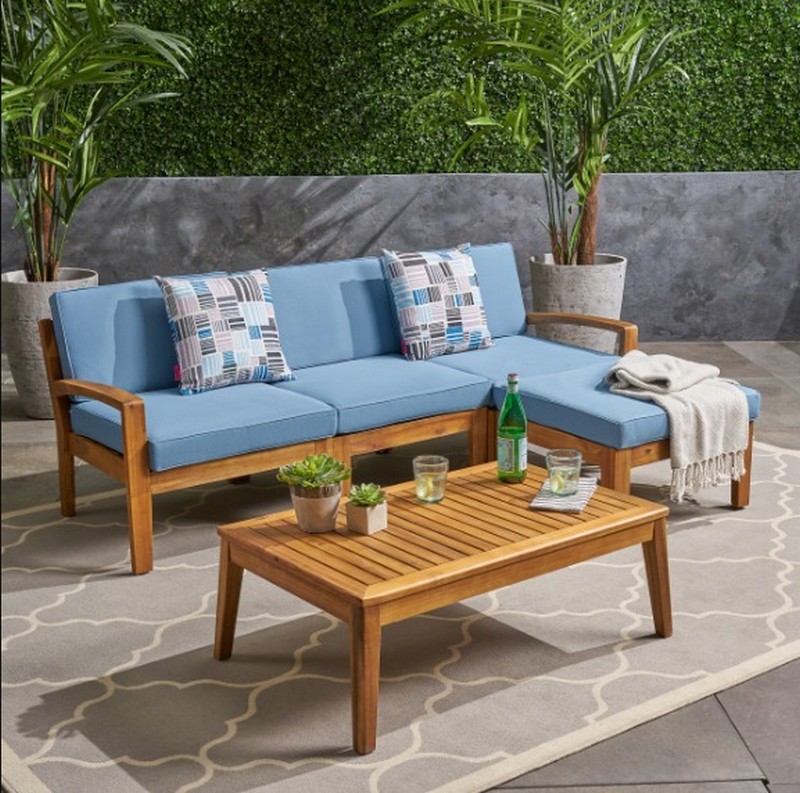
How to find the right linen upholstery fabric
Purchasing a new sofa or couch is a significant investment. At times, our budgets may not allow us to replace a large furniture item. You may want to adopt a more sustainable approach by upcycling and enhancing what you already have. While you can always refresh a living room and old couch with a cozy wool throw and stylish linen cushions, another option is to re-cover your sofa with new upholstery fabric.
Linen complements most interiors but is particularly appealing with a simple, natural style. When purchasing your fabric, consider how it will fit with the rest of your home and your lifestyle. If you appreciate rustic, relaxed textiles, then linen is definitely suitable for you. However, if your style is extremely luxurious and sleek, it may not be the best fabric for your home.
Some individuals may be hesitant about using linen fabric because they believe it requires ironing, but we embrace its lovely wrinkles and appreciate the luxurious softness that improves with each wash. Once you have relaxed on a comfortable, inviting linen-upholstered couch, you won’t want to go back!
Purchase your linen fabric or removable covers from a reputable supplier. Some lower-cost linens are made with a loose, inferior weave that is not as durable as higher-quality linen. If you are making an in-person purchase, gently pull the fabric and check if the fibers come apart easily. If the weave seems loose, this is probably not the best upholstery fabric.
To assist you in choosing the ideal upholstery fabric for your sofa, consider these factors:
Budget
Certain fabrics are more expensive than others, so determine what you can afford and aim to maximize your budget to obtain the best possible quality for your money. Cotton is relatively inexpensive, whereas higher-end linen fabrics might have a higher cost. The primary consideration is the cost per wear/use – choosing a cheaper option now might end up costing more if you need to replace your upholstery in a short time.
Durable
Take into account the frequency of sofa usage. If it’s mainly for personal use, less resilient upholstery fabrics are an option. In a busy household with multiple occupants or frequent visitors, select a sturdy material such as linen. Durability is crucial in this regard.
Color
If room redecoration isn’t planned, the color choice should align with existing wall and curtain colors. The fabric should harmonize with these colors, either within a similar palette or as an accent tone. Avoid placing dark fabric in direct sunlight to prevent fading. Light colors are more susceptible to stains, so consider the practicality of different shades.
Consider the long-term implications; while a certain color may be trendy now, will it become outdated quickly? When choosing a color for sofa covers, prioritize a shade you can live with for an extended period rather than following interior design trends.
Cleaning
Removable slipcovers are practical as they can be machine-washed if care instructions allow. While linen fabric can be spot cleaned with mild detergent, some materials are less easy to clean. Velvet, silk, or high thread count cotton fabric may not be as durable and may require professional cleaning.
Linen fabrics naturally resist stains, but spills still need to be treated. Even stain-resistant fabrics should be cleaned promptly to prevent stains from setting in.
Texture
Natural fabrics like linen typically have inherent slubs and creases, creating a relaxed feel and interesting movement. Introducing different fabrics like wool alongside linen creates layered texture and allows for variation without major interior changes.
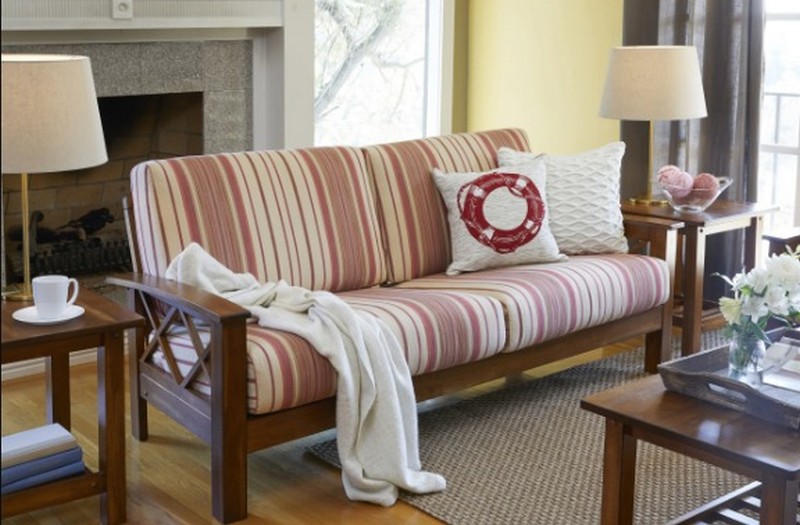
Using Linen Upholstery Fabrics
Linen fabric can be purchased by the yard online or in person. Ensure accurate measurements and account for seams and turning inside out. If purchasing fabric, consider adding zips or envelope edges to make sofa cushion covers easier to remove and clean.
After choosing your upholstery linen fabric, you can create a pattern from existing covers and sew your own, if you have sewing experience. Good quality linen is easy to work with due to its durability and smooth weave. Ironing during the sewing process is recommended to maintain neatness and ensure proper alignment of edges.
If DIY linen upholstery isn’t for you, professional upholsterers can create sofa slipcovers. When commissioning bespoke upholstery, specify your cleaning and cover removal requirements.
If you are seeking the best upholstery fabric for your sofa, and want to establish an elegant, cozy space that is also functional and easy to maintain, consider linen! For more linen fabric home decor ideas, refer to this post.
Cotton Fabric: Types, Uses & Features for Furniture
Cotton fabric is a versatile and widely utilized textile that holds considerable importance in the realm of furniture.
This piece will delve into various facets of cotton fabric, including its application in canvas, different types of cotton fabrics, common furniture uses, key attributes, disadvantages, and available color options.
It will offer valuable insights into why cotton remains a popular pick for furniture upholstery and other home decor purposes.
Let’s embark on this article to explore the domain of cotton fabric and its contribution to furniture.
What is Cotton Fabric?
Cotton fabric is a textile crafted from the fibers of the cotton plant (Gossypium hirsutum). It is esteemed for its softness, breathability, and versatility, rendering it a favored choice for varied applications such as clothing, home textiles, and furniture upholstery.
When distinguishing cotton fabric from other types of cotton fabric, it’s critical to consider factors like weave, texture, and intended use. For instance, cotton canvas is a robust, densely woven cotton fabric known for its durability, making it ideal for heavy-duty applications like upholstery and bags.
In contrast, cotton sateen boasts a sleek, glossy surface, often preferred for bedding and clothing due to its luxurious feel. Each variety of cotton fabric presents distinct qualities tailored to specific uses and preferences.
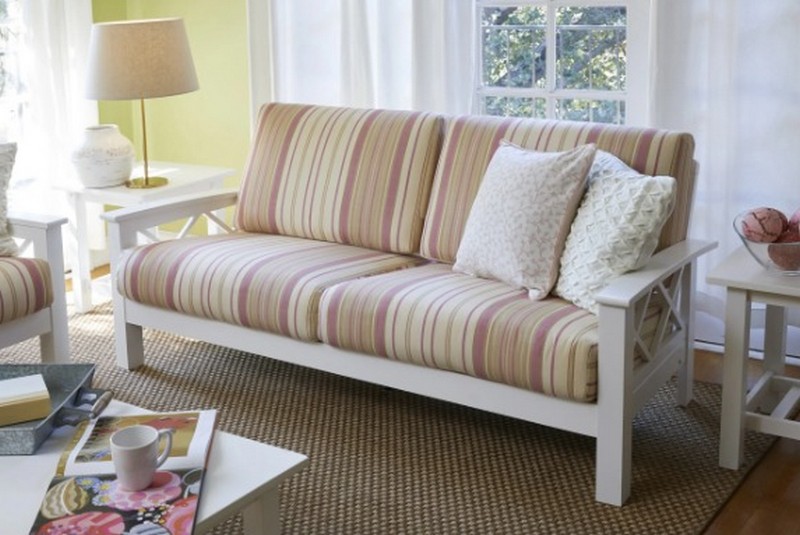
Varieties of Cotton Fabric
Cotton fabric is available in various forms, each with its distinct characteristics and applications. Below are some popular cotton fabric types:
Percale
Percale is a straightforward weave cotton fabric known for its crisp and cool sensation. It is frequently utilized for bed linens and shirts due to its smooth feel and breathability.
Sateen
Cotton sateen has a smooth, silky surface achieved through a satin weave. It has a luxurious feel and is commonly used for bedding, drapery, and fine clothing.
Twill
Twill cotton fabric is identified by its diagonal rib pattern. It is long-lasting and often used for jeans, workwear, and upholstery.
Muslin
Muslin is a lightweight, plain weave cotton fabric. It is versatile and used in a wide range of applications, including clothing, quilting, and culinary purposes.
Denim
Denim is a sturdy cotton twill fabric known for its use in jeans and casual clothing. It is durable and improves with wear.
Canvas
Cotton canvas is a heavy, closely woven fabric valued for its strength. It is commonly used for upholstery, tote bags, and outdoor applications.
Flannel
Flannel is a soft, brushed cotton fabric known for its warmth. It is commonly used for pajamas, shirts, and bedding, particularly in colder climates.
Poplin
Cotton poplin is a lightweight, closely woven fabric with a smooth surface. It is suitable for dress shirts, skirts, and summer clothing.
Voile
Voile is a lightweight cotton fabric that is sheer and has a slightly crisp texture. It is used for curtains, summer clothing, and delicate drapery.
Terrycloth
Terrycloth is highly absorbent and plush, making it ideal for towels, bathrobes, and beachwear.
Flame Retardant Cotton
This cotton fabric is treated to be flame-resistant, making it suitable for safety clothing and industrial applications.
Organic Cotton
Organic cotton is grown without synthetic pesticides or fertilizers, making it an eco-friendly choice for various cotton fabric types.
Cotton Fabric Applications
Cotton fabric is extensively used in various aspects of furniture, home decor, and textiles. Here’s how it is commonly utilized:
In Furniture
Upholstery: Cotton fabric is a popular choice for upholstery due to its durability and comfort. It is able to drape over sofas, armchairs, and other pieces of furniture, providing a warm and welcoming feel to living areas.
In Home Décor
Curtains: Window treatments often utilize cotton curtains due to their abundance in styles and patterns, offering both privacy and enhancing a room’s visual appeal.
When it comes to making cushions and throw pillows, cotton is a popular choice due to its softness and flexibility, allowing for a wide variety of designs, ranging from classic to contemporary.
Tablecloths: Cotton tablecloths are a staple in dining decor. They present a neat and sharp appearance for tables while safeguarding surfaces, and they are easy to keep clean.
Bedding: For bedding such as sheets, duvet covers, and pillowcases, cotton is a favored selection due to its comfort and breathability, ensuring a restful night’s sleep.
Rugs: Since they are lightweight and easy to clean, cotton rugs are a suitable option for various areas within the home, including kitchens, bathrooms, and bedrooms.
Throws and Blankets: By adding warmth and enhancing the style of living rooms and bedrooms, cotton throws and blankets are ideal for getting cozy on cooler evenings.
Cotton Fabric Characteristics and Features
Cotton fabric is celebrated for its numerous characteristics and features that make it a popular choice in the world of textiles and fashion. Here are some of its key characteristics and advantages:
Softness: Cotton is naturally soft to the touch, providing comfort against the skin. This softness is one of its most cherished qualities.
Breathability: Cotton is highly breathable, allowing air to pass through the fabric. It is suitable for wearing in warm and humid conditions due to its comfort.
Absorbency: Cotton has excellent moisture-absorbing properties, which make it ideal for items like towels and bathrobes that need to wick moisture away effectively.
Versatility: Cotton fabric is available in a variety of weaves and weights, allowing it to be used for a wide range of products, from lightweight summer clothing to heavy-duty upholstery.
Durability: When properly cared for, cotton fabric is durable and can withstand regular wear and washing.
Dyeability: Cotton readily absorbs dyes, leading to vivid and enduring colors. This makes it suitable for a wide range of color options.
Advantages of Cotton Fabric
Cotton has hypoallergenic properties, making it a safe option for individuals with sensitive skin or allergies as it is a natural material.
Cotton is relatively easy to maintain and clean, with most cotton items being suitable for machine-washing and stains being easily removable.
Being a natural fiber, cotton is biodegradable, making it environmentally friendly and capable of decomposing naturally over time.
It is usually more cost-effective than other natural fibers, allowing it to be affordable for a broad spectrum of consumers.
Cotton fabric provides a comfortable and cozy feel, making it a popular choice for everyday wear and bedding.
Cotton’s breathability and moisture-wicking properties contribute to regulating body temperature, ensuring coolness in summer and warmth in winter.
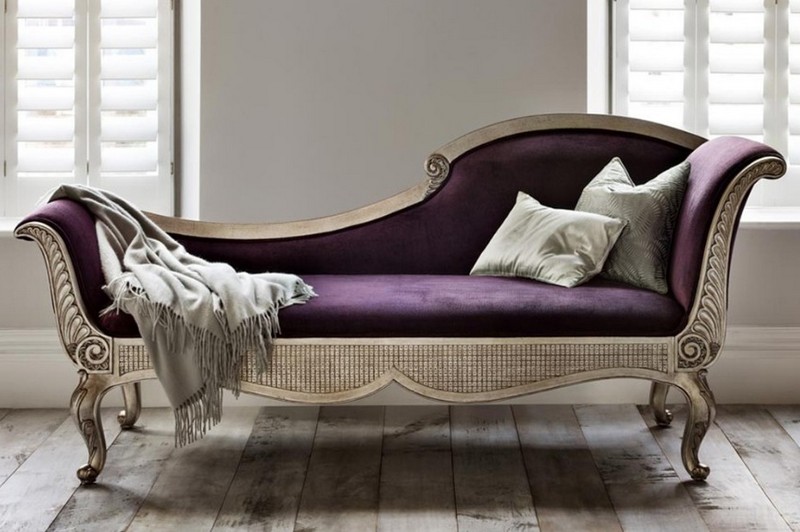
Disadvantages of Cotton Fabric
Quality cotton fabric, such as organic or long-staple cotton, can be relatively costly.
Cotton needs proper care to retain its quality; it is prone to wrinkling, and some items may require ironing after washing.
Cotton has a tendency to shrink when exposed to heat and moisture, which may cause clothes to become smaller.
Cotton Fabric Colors
Cotton fabric is available in a wide range of colors to cater to diverse preferences and design needs, and these colors can be achieved through various methods.
Natural Colors
Cotton naturally comes in off-white, cream, or beige shades, and these natural colors are often used in their unbleached state, giving the fabric a rustic and organic appearance.
Dyed Cotton
Cotton can be dyed in numerous colors to create vibrant and attractive fabrics through an immersion process in colored solutions, resulting in a wide spectrum of hues.
Color Fastness
Color fastness refers to a fabric’s ability to retain its color when exposed to various external factors such as washing, sunlight, or rubbing, and cotton fabric can have varying levels of color fastness.
Dye Types
Historically, cotton was dyed using natural sources like plant extracts, roots, and minerals, producing earthy and muted tones.
In modern textile production, synthetic dyes are commonly used, providing a wide range of vibrant and long-lasting colors, making cotton fabrics versatile in design.
Reactive dyes create a powerful chemical link with cotton fibers, leading to excellent color permanence. They are commonly used for cotton textiles that require bright and vivid colors.
Direct dyes are appropriate for coloring cotton and can produce a wide range of hues. They are known for their simplicity in application and can yield softer, more muted colors.
Pigment dyes sit on the surface of the cotton fibers and do not penetrate deeply. They are often used for achieving a vintage or washed-out appearance.
Vat dyes are primarily used for dark or intense shades on cotton, known for their excellent color fastness properties.
How to Clean Cotton Fabric
Caring for cotton fabric is a simple process and depends on the specific item being cleaned.
- Read Care Labels
Always begin by checking the care label on your cotton item to follow specific cleaning guidelines.
- Regular Washing
For most cotton clothing and linens, machine-washing with cold or warm water and a mild detergent is suitable. To avoid color running, separate light and dark-colored cotton items.
- Stain Treatment
Promptly treat stains to prevent them from setting in using a stain remover or a mixture of water and mild detergent. Gently blot the stain and rinse thoroughly with water.
- Drying
Most cotton items can be tumble-dried on a low to medium setting. Promptly remove items from the dryer to prevent excessive wrinkling and fold or hang them.
- Ironing
If needed, use a steam iron on the appropriate heat setting to iron cotton items while they are slightly damp and remove wrinkles. For delicate or embroidered cotton fabrics, use a press cloth to protect the surface.
- Dry Cleaning
Certain cotton items, particularly those with intricate patterns, may need professional dry cleaning. Always check the care label for any dry cleaning instructions.
- To maintain cotton upholstery or home decor items, regularly use a vacuum to eliminate dust and debris.
When dealing with stains, use a mild detergent and water following the manufacturer’s guidelines for spot cleaning.
- To prevent color fading over time, it’s best to avoid prolonged exposure to direct sunlight.
- When storing cotton items, opt for a cool, dry place and refrain from damp or humid conditions that can promote mildew growth.
Al Nassaj is dedicated to delivering high-quality upholstery fabrics and ensuring customer satisfaction for partners in numerous Arab and Western countries.
How is Cotton Canvas Unique from Other Types?
Cotton canvas is a strong, simple-woven fabric typically used for heavy-duty purposes. Its unique weave and thickness make it more durable and suitable for items like tote bags, tents, and artwork canvases.
What are the Common Applications of Cotton Fabric in Furniture?
Cotton fabric is frequently used for furniture upholstery and cushions due to its comfort, breathability, and versatility. It’s also utilized for curtains and drapes, offering a wide range of design options.
What are the Characteristics and Qualities of Cotton Fabric?
Cotton fabric is renowned for its softness, breathability, and absorbency. It is available in various weaves, providing different textures and appearances. Cotton is also simple to dye, offering a wide array of colors.
What are the Drawbacks of Cotton Fabric?
Drawbacks of cotton fabric include potential shrinkage, wrinkling, and susceptibility to staining. It may also need more upkeep compared to some synthetic fabrics.
In What Colors is Cotton Fabric Available?
Cotton fabric is available in a wide range of colors, including natural tones like white, cream, and beige, as well as a broad spectrum of dyed colors. The color options are extensive, catering to various design preferences.
Which fabric is ideal for summer?
Cotton is often regarded as one of the top fabrics for summer because of its breathability and moisture-wicking properties. Linen and lightweight blends are also good options for warm weather.
Is cotton an inexpensive fabric?
Cotton fabric’s price can vary based on factors such as quality, weave, and finish. While basic cotton fabrics are generally affordable, premium or specialty cotton blends may be pricier.
